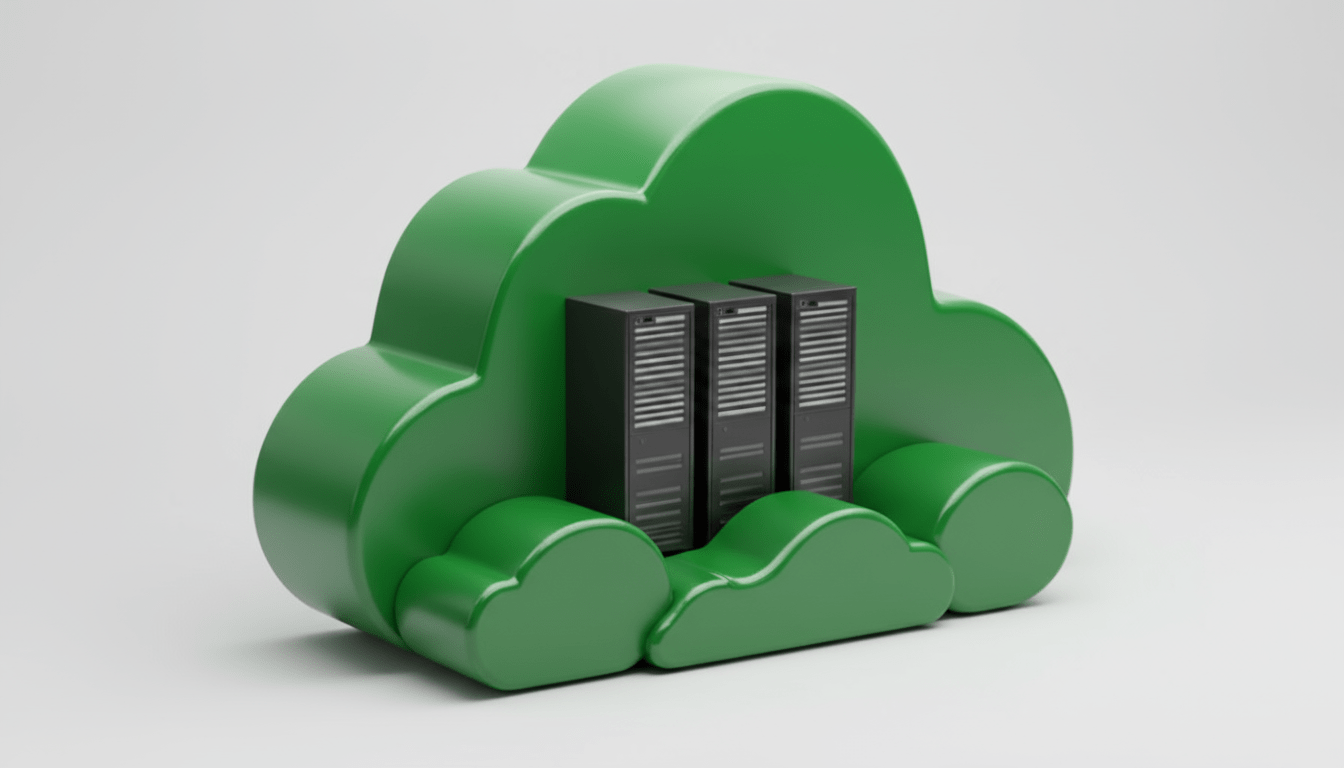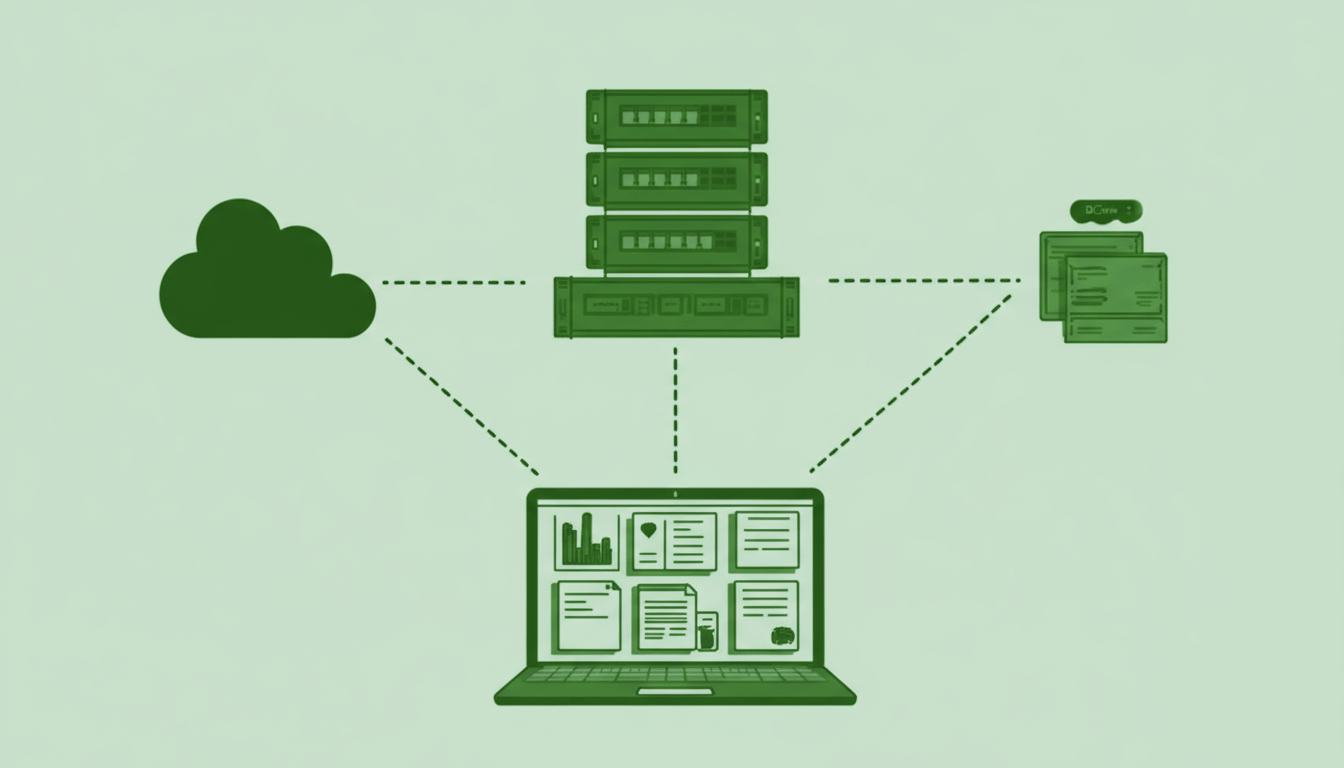The conversation around iSeries cloud hosting has moved from “if” to “how fast.” The 2025 IBM i Marketplace Survey shows a clear shift: cloud adoption for test and development workloads has risen from 53% to 65%, and core business applications from 58% to 65%.
Organizations report 30–70% lower maintenance costs and up to 85% less downtime when leveraging cloud-based Disaster Recovery as a Service (DRaaS).
With many lift-and-shift migrations delivering ROI in just 3 to 6 months, CIOs are now prioritizing iSeries cloud hosting as a practical path to resilience, agility, and modernization.
In this blueprint, we break down the real-world architecture, recommended tools, and common migration pitfalls – so you can move your iSeries workloads to the cloud with precision and confidence.
Why Migrate IBM i (iSeries) to the Cloud?
IBM i (AS/400, iSeries) workloads have powered core business systems for decades. But today’s CIOs face a turning point: maintaining legacy on-premises infrastructure is expensive, risky, and hard to staff.
ISeries cloud hosting provides a modern alternative that reduces cost, strengthens resilience, and ensures IBM i remains a strategic asset.

Core Business Reasons
On-prem IBM i hardware is reaching its limits. Power, cooling, and storage constraints increase fragility and cost, while hardware refresh cycles tie up capital budgets. By moving to the cloud, organizations shift from CAPEX-heavy hardware purchases to predictable OPEX models, with upgrades and maintenance handled by the provider.
When leaders weigh the move, the drivers usually come down to:
- Aging infrastructure that is costly and vulnerable to outages
- Disaster recovery and redundancy with built-in failover and multi-region replication
- Scalability that adjusts to business cycles without overprovisioning hardware
- Compliance and security with ISO 27001, HIPAA, GDPR, and SOC 2-ready environments
Staffing and Expertise Gaps
The IBM i workforce is shrinking, with fewer RPG developers and administrators entering the field. iSeries cloud hosting fills that gap by offering 24/7 managed services: partitioning, upgrades, backup, high availability, and monitoring. Internal teams can redirect attention to applications, compliance, and user-facing needs instead of infrastructure firefighting.
Deployment Flexibility
Cloud models let organizations adopt the right balance of control, agility, and compliance:
- Public Cloud Hosting: Shared infrastructure, fast provisioning, pay-as-you-go (e.g., IBM PowerVS, Skytap on Azure).
- Private Cloud Hosting: Dedicated resources for stricter compliance and performance predictability.
- Hybrid Cloud Hosting: Combines on-premises stability with cloud scalability for phased migrations and disaster recovery.
Technology Advantages
Cloud platforms offer capabilities difficult to replicate on-prem:
- On-demand scaling of CPU, memory, and storage
- Enterprise-grade backup with multi-location redundancy
- Disaster Recovery as a Service (DRaaS) with recovery in minutes
- Sandbox environments for safe testing of patches, upgrades, or integrations
Discover the key AS400 application modernization methods that help businesses balance minimal disruption with long-term transformation
Steps for a Successful IBM iSeries Cloud Hosting Migration
Let’s look at some of the common approaches businesses take when migrating IBM i workloads to the cloud.
Assess Your Current Environment
The first step is to understand what you’re working with. Take stock of all IBM i workloads, including applications, databases, and data volumes. Document dependencies across systems, hardware specifications, OS versions, and network architecture. Identify which workloads are mission-critical and which can be migrated in phases or retired altogether.
Key actions to prioritize:
- Inventory applications, databases, and integrations
- Map workload dependencies
- Separate mission-critical from secondary workloads
- Track performance metrics and peak usage patterns
Define Your Cloud Strategy and Goals
A migration without clear goals is risky. Decide whether your priority is cost reduction, resilience, modernization, or capacity expansion. Define your scope (full migration vs. phased) and timeline, then identify which services—such as IaaS, PaaS, or DRaaS—are required.
Hosting Deployment Models
- Public Cloud Hosting: Multi-tenant setup with shared hardware, fast provisioning, and pay-as-you-go pricing. Examples include IBM Power Systems Virtual Server (PowerVS) on IBM Cloud and Skytap on Azure.
- Private Cloud Hosting: Dedicated IBM Power hardware or isolated IBM i environments. Provides stricter compliance, predictable performance, and resource isolation—ideal for regulated industries.
- Hybrid Cloud Hosting: Blends on-premises and cloud. Supports phased migrations, disaster recovery, and burst capacity during peak loads.
Engage Teams and Vendors
Successful migrations require alignment across technical and business teams. Involve IBM i administrators, DevOps, compliance officers, and business leaders early. Validate ISV licensing and compatibility before moving forward. Partner with cloud providers or consultants who have proven IBM i migration experience.
Plan Your Migration
This is where strategy turns into execution planning. Choose an approach based on your workloads and business goals:
- Lift-and-shift for speed and minimal disruption
- Re-platforming to optimize workloads for performance
- Hybrid bursting for seasonal or peak demand flexibility
Draft a detailed plan that covers timelines, team roles, rollback strategies, and disaster recovery measures. Pay special attention to network configuration to preserve 5250 session performance.
Execute Pilot and Testing Phase
Before committing to a full migration, start small. Many organizations begin with a non-critical workload or set up Disaster Recovery as a Service (DRaaS). Test everything—functionality, performance, integration, and security. Pilots reduce surprises and give your teams the confidence to scale.
Optimize Cloud Usage and Costs
Once in the cloud, optimization is an ongoing process. Monitor CPU, memory, storage, and I/O usage through provider dashboards. Right-size LPARs to avoid over-provisioning and schedule non-production workloads during off-hours to save costs. Regularly review billing reports with your provider to identify efficiency opportunities.
Manage Security and Compliance Continuously
Cloud migration doesn’t end with infrastructure—it extends to governance. Enforce IAM policies and MFA for privileged access, encrypt data in transit and at rest, and conduct regular audits. For industries like healthcare or finance, align with HIPAA, PCI DSS, or SOX requirements.
Plan for Continuous Improvement and Modernization
The real value of cloud hosting comes after migration. Integrate IBM i workloads with analytics, AI, and automation tools. Use cloud-based dev/test sandboxes to accelerate releases. Keep up with IBM i OS patches and cloud upgrades, and consider hybrid or multi-cloud models to enhance resilience.
iSeries Cloud Hosting Risks (and How to Avoid Them)
Here are some of the pitfalls companies usually make during the iSeries cloud hosting process, along with proven ways to avoid them and keep your workloads stable, secure, and compliant.
Software Compatibility
Many Independent Software Vendor (ISV) applications running on iSeries may require newer releases or updates to function properly in the cloud. Legacy applications designed for older hardware or OS versions often fail after migration.
How to avoid it: Audit all applications for compatibility before moving. Confirm vendor support for cloud instances and schedule upgrades or refactoring in phases to avoid post-migration outages.
Networking Gaps
Poor WAN planning can lead to latency issues, especially in interactive 5250 sessions, reducing productivity and slowing real-time workflows.
How to avoid it: Assess network capacity and latency upfront. Use dedicated WAN links, VPNs, or direct cloud connect options for sensitive workloads. Pilot-test 5250 performance to ensure a seamless user experience.
Security Missteps
Carrying over outdated AS/400 security practices creates vulnerabilities. Without cloud-ready Identity and Access Management (IAM) policies or Multi-Factor Authentication (MFA), systems risk unauthorized access and compliance failures.
How to avoid it: Redesign IAM policies for cloud, mandate MFA, and encrypt data both in transit and at rest. Conduct pre-migration security audits and compliance checks against standards like SOX, HIPAA, or PCI DSS.
Skipping Rollback Plans
Without a rollback plan, failed migrations can cause downtime, data loss, and disruptions. Legacy systems often lack modern backup protocols, increasing risk.
How to avoid it: Define and test rollback procedures before migration. Schedule backups and take snapshots at critical points. Use staged cutovers and keep on-prem and cloud environments running in parallel until stability is proven.

Best Practices for IBM iSeries Cloud Hosting
Here are some of the most common pitfalls organizations encounter during iSeries cloud hosting migrations, and the proven ways to avoid them.
Begin with DRaaS or a Test Workload
Start small by migrating a non-critical test environment or implementing Disaster Recovery as a Service (DRaaS). This approach allows you to validate the cloud architecture, test operational readiness, and build recovery capabilities without risking production systems. Early pilots also reveal potential issues that can be resolved before larger workloads are moved.
Validate ISV Licensing and Version Compatibility Early
Independent Software Vendor (ISV) applications often have specific licensing or version requirements for cloud environments. Confirm compatibility with IBM i and your chosen provider in advance. Engaging vendors early prevents post-migration surprises, reduces compliance risks, and ensures smooth application performance.
Build and Test a Rollback Plan Before Cutover
Every migration should include a well-defined rollback strategy. Establish backups, snapshots, and restoration processes, and test them thoroughly before go-live. This gives you the confidence that workloads can be quickly reverted in case of unexpected issues, minimizing downtime and protecting business continuity.
Involve IBM i Administrators and Business SMEs at Every Stage
Collaboration between technical IBM i administrators and business subject matter experts (SMEs) is critical. While administrators bring knowledge of system configuration and performance, SMEs ensure business processes, compliance requirements, and user needs are addressed. This joint involvement strengthens both the technical and business outcomes of the migration.
Ongoing Optimization After Migration
Monitor Usage Reports and Adjust Resources Quarterly
Review CPU, storage, and network utilization reports regularly. This ensures that resources are right-sized and aligned with demand, preventing unnecessary spend while maintaining performance. Quarterly reviews help organizations stay efficient and cost-conscious.
Integrate with Analytics, APIs, and SIEM
Cloud-hosted IBM i workloads can be connected to modern analytics tools for deeper insights. APIs make it possible to automate monitoring and reporting, while integration with Security Information and Event Management (SIEM) systems provides advanced security visibility and faster incident response.
Automate Backups and Review HA Failover Quarterly
Set up automated backup routines to cloud storage to ensure recovery points are always up to date. In addition, test high availability (HA) failover mechanisms at least once a quarter. Documenting results and running regular drills keeps teams prepared for disruptions and strengthens resilience.
Convert CAPEX to OPEX
Cloud hosting replaces large upfront hardware and licensing purchases with predictable operational expenses. You pay only for the compute, storage, and network resources consumed. This shift reduces budget strain and frees resources for innovation projects.
Reduce Downtime
Tested backup and failover processes significantly cut the risk and length of outages. Less downtime means improved customer satisfaction, greater productivity, and fewer costs associated with incident recovery.
Integrate IBM i with Modern Workloads
Cloud environments provide a bridge between legacy IBM i applications and modern technologies like APIs, web services, databases, and analytics platforms. This integration accelerates digital transformation and increases agility in adapting to new business needs.
Track Cost Savings and Efficiency Gains
Well-executed migrations consistently deliver measurable benefits. Organizations typically achieve 20 to 30 percent reductions in infrastructure costs, faster project delivery timelines, and greater scalability to handle seasonal spikes. Regularly measuring these outcomes helps demonstrate the value of cloud hosting to stakeholders.
Common Scenarios for Starting Your iSeries Cloud Journey
Not every organization begins with a full production migration. In fact, many of the IBM i cloud projects we’ve guided start small, with one or two focused use cases that prove value and reduce risk. Here are the most common scenarios we see:
Scenario 1: Disaster Recovery That Meets the Business Standard
Disaster recovery is often the first step toward the cloud. Clients facing weather events, single-site risk, or aging facilities use cloud-based DR to strengthen resilience without the cost of a second data center.
- Fibre-attached IBM Cloud storage minimizes latency and keeps vendor support intact.
- Dual VIOS and Live Partition Mobility allow workloads to move between systems without downtime.
- DB2 and other core services are configured just as they were on-premises, but with cloud-level redundancy.
This approach delivers recovery time and point objectives that most on-prem setups struggle to meet, while also providing a safe on-ramp to future production hosting.
Scenario 2: Development and Testing Without On-Prem Bottlenecks
Another popular entry point is cloud-based dev/test. On-prem capacity is usually reserved for production, leaving test environments underfunded and slow to provision. By moving dev/test workloads to IBM Power Virtual Servers:
- Teams can spin up environments in minutes, validate patches, and experiment safely.
- Costs align with usage through hourly metering.
- Sandboxes are fully isolated, reducing risk to production while enabling more frequent, higher-quality releases.
This model removes upgrade delays, reduces technical debt, and accelerates modernization.
Scenario 3: Hosting Production Applications in the Cloud
Some organizations are ready to take the next step and host production workloads directly in the cloud. This doesn’t have to be a “big bang” move. Instead, clients often:
- Run core business applications on Power Virtual Servers with hybrid connectivity.
- Use cloud bursting for seasonal spikes or new initiatives.
- Rely on IBM-managed data center layers below the OS, reducing the strain on small IT teams.
The result is a flexible hybrid setup that blends on-prem control with cloud agility, giving businesses the confidence to expand their cloud footprint over time.
Explore how AS400 cloud hosting platforms help you overcome data integration challenges with practical strategies and proven solutions.
Lessons from Clients Across Industries
When clients come to us, the challenges are often similar, even though the industries are very different. They are running stable IBM i environments, but the cracks show when scale, compliance, or cost pressures hit. Here’s what we’ve seen and addressed across sectors:
Retail
Retailers struggle most during seasonal peaks. Systems that run fine in March start breaking in November. One client told us they were buying hardware just to survive Black Friday, only to see it sit idle the rest of the year. By moving their seasonal workloads into PowerVS, we gave them the flexibility to scale up and down as needed, without the overhead of permanent infrastructure. Their teams could finally stop worrying about capacity planning and focus on customer experience.
Healthcare
Healthcare organizations often approach us with compliance on their minds. HIPAA audits, regulatory checks, and the pressure of protecting patient data while still running clinical systems in real time. In more than one case, their disaster recovery plans meant hours of downtime if something went wrong. We redesigned those environments with IBM i cloud backup and HA, bringing failover down to minutes. They passed audits with confidence, and more importantly, their critical systems stayed available for patient care.
Manufacturing
Manufacturers usually feel stuck in long release cycles and heavy technical debt. IT teams spend more time patching than innovating. For these clients, we introduced hybrid setups using PowerVS and Skytap on Azure. That gave them safe sandboxes to test patches and new features without touching production. The result was shorter release cycles, less firefighting, and more room to modernize at their own pace.
Financial Services
Financial institutions want agility but cannot afford mistakes with compliance or security. A recurring question we hear: “How do we get more from our IBM i data without creating risk?” For these clients, we rebuilt workloads in IBM Cloud and layered in analytics with watsonx. Fraud detection became sharper, risk analysis faster, and customer engagement more personalized — all while staying within strict regulatory frameworks.
Public Sector
Agencies running citizen services are under unique pressure. Systems must be available 24/7, but many still run on aging IBM i environments. For these clients, we migrated workloads into IBM Cloud with built-in disaster recovery and stronger access controls. Services to citizens stayed uninterrupted, and compliance requirements were consistently met without stretching already-thin IT teams.
Let’s Wind Up
Every IBM iSeries cloud hosting journey begins differently. Some organizations start with disaster recovery, others with development and testing, and many take the step of hosting production workloads. The real challenge is choosing the right entry point based on your goals and risk profile. That’s where our expertise makes the difference. We’ve guided clients across retail, healthcare, manufacturing, finance, and public sector through zero-disruption migrations that deliver both resilience and agility. Fill out the form, and our experts will review your current environment and recommend a best-fit hosting strategy aligned to your business needs.
Frequently Asked Questions



